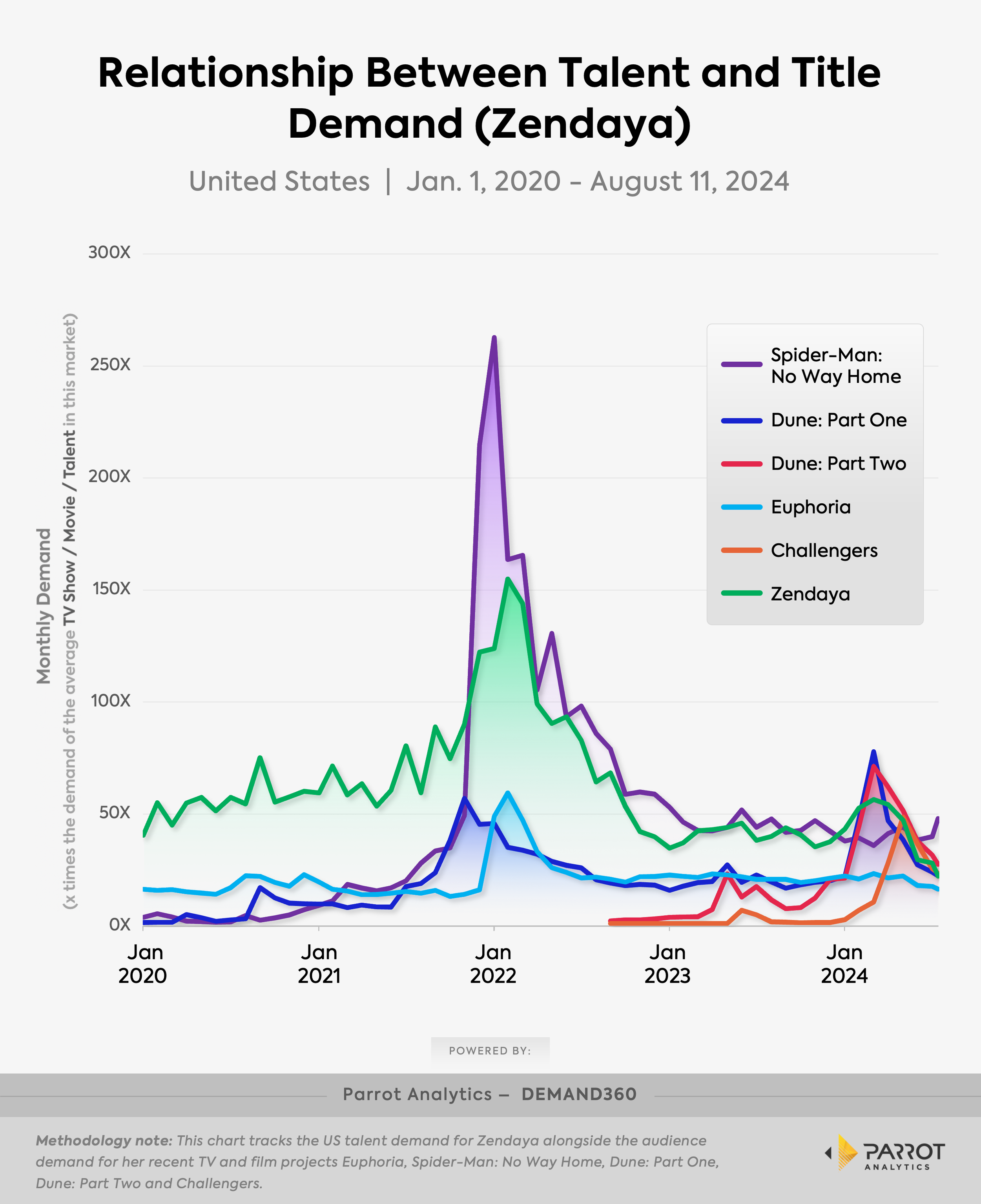The Zendaya Effect: Turning Every Release Into A Cultural Moment
Today, we’re revisiting a familiar topic from a new angle: the franchise halo effect. For those of you that don’t cling to my every written word on here — what are you doing? — I’ve previously covered how successful franchises are an exercise in efficient repetitive cash flow and engagement. New entries drive renewed interest into older installments, creating cross-pollinating funnels of viewer interest at a reasonable cost. But that isn’t the only way a halo can shine.
The relationship between talent and title is a bit of a chicken and egg scenario: are viewers flocking to a project because of the star’s name or did the project help turn the name into a star? Often, it’s a bit of both. A star's name can elevate a project, but a successful project can also amplify a star's appeal. Zendaya embodies this dynamic perfectly.
Analyzing US talent demand for Zendaya alongside audience demand for her recent projects – Euphoria, Spider-Man: No Way Home, Dune: Part One, Dune: Part Two, and Challengers – reveals a compelling pattern. Data from Parrot Analytics shows correlated spikes in demand for both Zendaya and her projects following new releases. This reveals key insights into audience behavior.
For instance, the Oct. 2021 release of Dune: Part One (which earned more than $400 million worldwide and 10 Academy Award nominations) boosted anticipation for the Dec. 2021 debut of Spider-Man: No Way Home ($1.9 billion), which in turn fueled interest in Euphoria season two (one of HBO’s most-watched and youngest-skewing series) in Jan. 2022. This cascading effect continued with March 2024’s Dune: Part Two (which grossed more than $710 million) and April’s Challengers (which likely broke even at the box office). While project cadence plays a role, Zendaya’s star power is undeniable. Her ability to choose high-quality projects that resonate with audiences creates a virtuous cycle, enhancing both her and the projects' appeal. When a new Zendaya project is released, audiences tend to revisit her previously released work as well.
This case study underscores the symbiotic relationship between talent and title. Zendaya's success highlights the importance of careful project selection and the potential for a star to significantly impact a project's commercial prospects. Had she chosen poor projects that flopped critically and commercially, the relationship between talent and title demand would likely be far more erratic with less ability to drive renewed interest to older titles. It also shows that despite the challenges with production schedules, a regular cadence of released titles early on in a career can help build momentum and star power.
By consistently delivering on expectations, she has transformed herself into a cultural icon whose name alone can generate significant buzz. Her story serves as a blueprint for aspiring actors and a valuable example for industry professionals seeking to maximize the impact of their talent.


